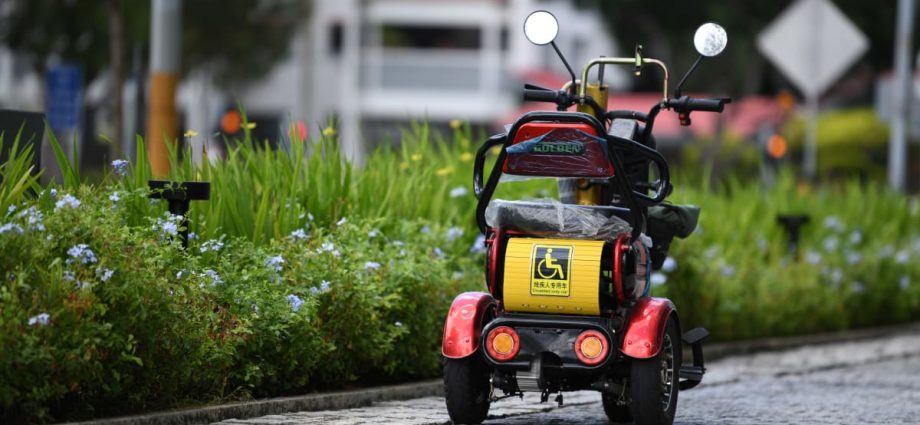
The panel was set up in 2015 to guide the safe use of active mobility devices, which include bicycles, electric bicycles, PMDs and PMAs.
In 2018, it recommended a “light-touch” approach to PMA regulations, given the challenges faced by people with mobility challenges. It suggested a 10kmh speed limit on PMAs – aligned with the speed limit on footpaths. This became regulation and still stands today.
FOR THOSE WITH “MEDICAL NEEDS”
One of the report’s latest recommendations was to allow only users with certified medical needs or walking difficulties to use mobility scooters.
However, this requirement is proposed only for mobility scooters, and not manual and motorised wheelchairs. This is in light of “prevalent feedback” of abuse among able-bodied users are linked to mobility scooters, AMAP added.
“This is a targeted approach, to minimise impact on users with genuine needs who are using manual and motorised wheelchairs,” said the panel.
Given the potential “burden” on genuine users to obtain such certification, sufficient time should be given to them before enforcement commences, said AMAP.
“We are suggesting to Government to tap on any existing certification whether by doctors, whether by occupational therapists, by SG Enable so that it is as easy as possible for genuine users to continue using their devices,” AMAP chairman Baey Yam Keng told reporters on Monday.
Mr Baey, who is also the Senior Parliamentary Secretary for Transport, said the government could take a few months to look through the recommendations before deciding on their adoption.
Another recommendation was to reduce the device speed limit of all motorised PMAs from 10kmh to 6kmh.
Given that typical walking speeds are between 4 to 6 kmh, this better reflects the intended use of PMAs, which is to replace walking for users with mobility challenges, the AMAP said.
The panel proposed that the government put in place “transitionary measures” to allow genuine users to continue using their existing PMAs, but to travel within the lowered 6kmh speed limit.
Retailers should similarly be required to sell PMAs with a maximum device speed of no more than 6kmh, said AMAP.
Reasonable transition time could be catered for retailers to make the necessary adjustments, including to clear their existing stock, and obtain or import devices that adhere to the 6kmh device speed limit, it said.
DIMENSION RESTRICTIONS FOR PMAs
The panel also proposed applying the dimension restrictions for PMAs used on public transport, to their use on public paths.
Currently, LTA imposes dimension restrictions (70cm width, 120cm length, 150cm height, 300kg laden weight) for the use of PMAs on public transport.
“Applying a consistent set of criteria also allows PMA users to transit between public paths and public transport more smoothly,” said the panel.
Given that there is a “small proportion” of users who may need to use PMAs that exceed the allowable dimensions for medical reasons, the panel recommended that the government put in place measures to ensure such genuine users still have access to PMAs.
AMAP also recommended that the government step up public education efforts in several areas.
These include rules and requirements for PMAs and users, who can use PMAs, as well as a code of conduct for PMAs and other path users.

